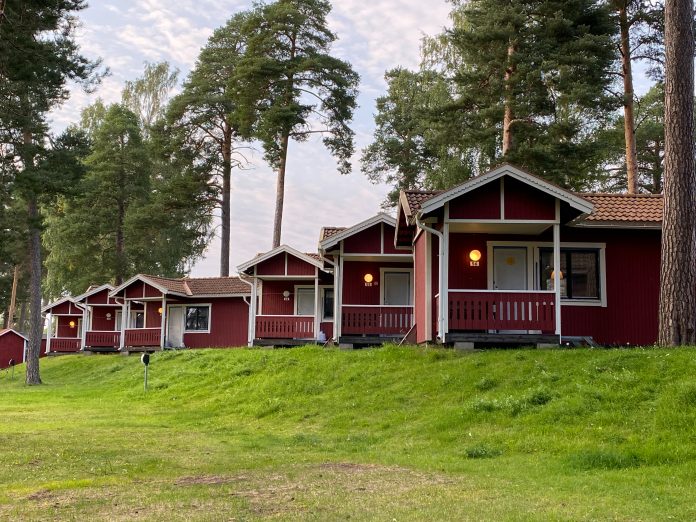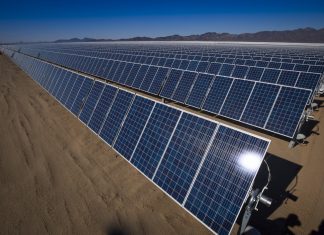The tiny house movement has been gaining popularity in recent years, as more and more people are choosing to downsize their living spaces in order to live a simpler, more sustainable lifestyle. There are many benefits to downsizing to a tiny house or cabin, including financial savings, environmental sustainability, and a newfound sense of freedom.
One of the biggest benefits of downsizing to a tiny house is the financial savings. Tiny houses are typically much cheaper than traditional homes, both to build and to maintain. This means that those who choose to downsize to a tiny house can save a significant amount of money on housing expenses, which can be used to pursue other goals or simply to enjoy a more comfortable lifestyle. Additionally, downsizing often involves decluttering, which means getting rid of excess belongings. You can sell your items at pawnshops like USA Pawn Shop or online marketplaces to boost your savings and simplify your life. For convenient online options, a trusted place such as valuepawnandjewelry.com provides a trusted platform to turn your items into extra cash.
Another benefit of downsizing to a tiny house is the environmental sustainability. Tiny houses are typically much smaller than traditional homes, which means they require less energy to heat and cool. They also often rely on renewable energy sources, such as solar power, which helps to reduce their carbon footprint. Additionally, many tiny houses are built using sustainable materials, such as reclaimed wood or recycled plastic, which helps to reduce the impact of building on the environment.
Finally, downsizing to a tiny house can provide a newfound sense of freedom. With less space to worry about, tiny house dwellers are able to focus on the things that truly matter in life, such as spending time with loved ones, pursuing hobbies, and traveling. Additionally, the simplicity and minimalism of tiny house living can help to reduce stress and improve overall well-being.
Overall, the tiny house movement is a trend that is here to stay. With its many benefits, including financial savings, environmental sustainability, and a newfound sense of freedom, it’s no wonder that more and more people are choosing to downsize to a tiny house or cabin. So if you decided to live on a tiny house, you can go to Surepaint website to enhance the aesthetic of your property.
THE BENEFITS OF LIVING IN A TINY CABIN: SIMPLICITY AND CONNECTION TO NATURE

There are many benefits to downsizing to a tiny cabin, including a connection to nature, a sense of community, and a newfound appreciation for the simple things in life.
One of the biggest benefits of living in a tiny cabin is the connection to nature. Tiny cabins are often located in remote, natural settings, providing residents with a sense of tranquility and peace that is hard to find in the city. Additionally, living in a tiny cabin allows residents to be more self-sufficient and to live in harmony with the natural world. Many tiny cabin dwellers grow their own food, use rainwater collection systems, and rely on renewable energy sources, such as solar power.
Another benefit of living in a tiny cabin is the sense of community. Tiny cabin dwellers often share a sense of community with other cabin dwellers and with the natural environment. This sense of community can be a powerful antidote to the isolation and loneliness that can be felt in the city. Additionally, living in a tiny cabin can foster a sense of community with others who share similar values and ideals.
Finally, living in a tiny cabin can provide a newfound appreciation for the simple things in life. With less space to worry about, tiny cabin dwellers are able to focus on the things that truly matter in life, such as spending time with loved ones, pursuing hobbies, and enjoying the beauty of nature. Additionally, the simplicity and minimalism of tiny cabin living can help to reduce stress and improve overall well-being.
Overall, living in a tiny cabin can be a life-changing experience. With its many benefits, including a connection to nature, a sense of community, and
The Advantages of Downsizing to a Tiny House or Cabin: More Time and Money for the Things that Matter
Downsizing to a tiny house or cabin can bring a number of advantages, including more time and money for the things that truly matter, a greater sense of freedom, and a reduced environmental impact.
One of the main advantages of downsizing to a tiny house or cabin is the ability to have more time and money for the things that truly matter. Tiny houses and cabins are typically much cheaper to build and maintain than traditional homes, which means that homeowners can save a significant amount of money on housing expenses. This extra money can be used to pursue other goals, such as traveling, starting a business, or just enjoying a more comfortable lifestyle. Additionally, with less space to worry about, tiny house and cabin dwellers have more time to focus on the things that truly matter, such as spending time with loved ones, pursuing hobbies, and giving back to the community.
Another advantage of downsizing to a tiny house or cabin is the greater sense of freedom it can provide. Tiny houses and cabins are often mobile, which means that homeowners can take their home with them wherever they go. This can be especially appealing to those who love to travel or who are looking for a change of scenery. Additionally, the simplicity and minimalism of tiny house and cabin living can help to reduce stress and improve overall well-being.
Finally, downsizing to a tiny house or cabin can have a positive impact on the environment. Tiny houses and cabins are typically much smaller than traditional homes, which means they require less energy to heat and cool. Additionally, many tiny houses and cabins are built using sustainable materials, such as reclaimed wood or recycled plastic, and often rely on renewable energy sources, such as solar power, which helps to reduce their carbon footprint.
Overall, downsizing to a tiny house or cabin can bring a number of advantages, including more time and money for the things that truly matter, a greater sense of freedom, and a reduced environmental impact. It is an appealing choice for people looking for a simpler, more sustainable lifestyle.
THE FUTURE OF DOWNSIZING AND THE POTENTIAL IMPACT ON SOCIETY AND THE ENVIRONMENT

Downsizing is the process of moving to a smaller home or apartment, often in order to reduce expenses and simplify one’s lifestyle. With the rising cost of housing, more and more people are turning to downsizing as a way to make ends meet and are now preparing their moving boxes and getting storage units from their trusted commercial storage facility to relocate to a smaller house. However, downsizing also has the potential to have a significant impact on society and the environment.
Economically, downsizing can help to make housing more affordable for individuals and families. With the cost of housing on the rise, many people are being priced out of the market. Downsizing allows them to purchase a smaller and more affordable home, which can help to stabilize the economy by keeping people in their homes and reducing the number of foreclosures. Additionally, downsizing can also lead to lower utility bills, which can help to reduce the financial burden on individuals and families.
From an environmental perspective, downsizing is a positive trend. Larger homes use more energy and have a bigger carbon footprint than smaller homes. By downsizing, individuals can reduce their energy consumption and their impact on the environment. Furthermore, downsizing can also contribute to the development of more compact and walkable communities, which can reduce the need for transportation and promote sustainable urban development.
Downsizing also has the potential to have a positive social impact. People who downsize often end up living in smaller communities with more communal spaces. This can lead to stronger connections with neighbors and a sense of community that is often lacking in larger, more spread out neighborhoods. Downsizing can also promote a healthier and more active lifestyle as people are more likely to walk or bike to work, school or daily errands, when living in close proximity. Moreover, downsizing also encourages people to consume less, thus promoting a more minimalist and sustainable consumer culture.
Government can play a crucial role in promoting and facilitating downsizing. They can provide incentives for individuals to downsize, such as tax breaks or subsidies, and make it easier for people to find affordable housing. Governments can also promote sustainable urban development by creating policies that encourage compact, walkable communities. This can help to reduce the strain on public services and infrastructure, and create more equitable and sustainable cities.
In conclusion, downsizing has the potential to have a positive impact on society and the environment. It can make housing more affordable for individuals and families, reduce energy consumption, and promote sustainable and eco-friendly living. It can also create stronger connections between neighbors and promote a healthier and more active lifestyle. However, it’s important to note that downsizing should be considered carefully, as the process can come with its own set of challenges, and it is important to understand the impact it can have on individuals and communities. Thus, it’s crucial to conduct further research and analysis to understand the full impact of downsizing.













